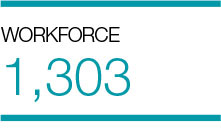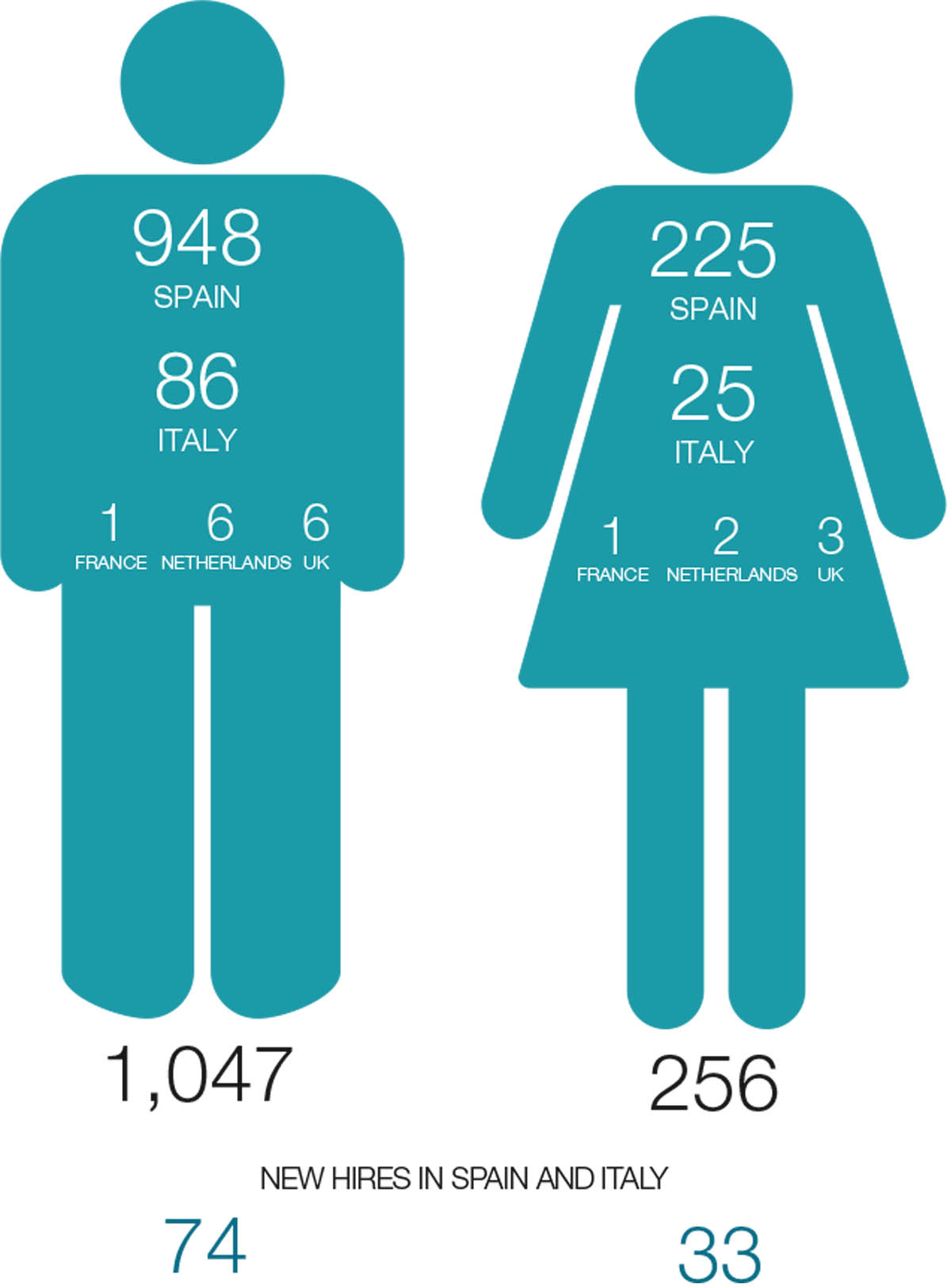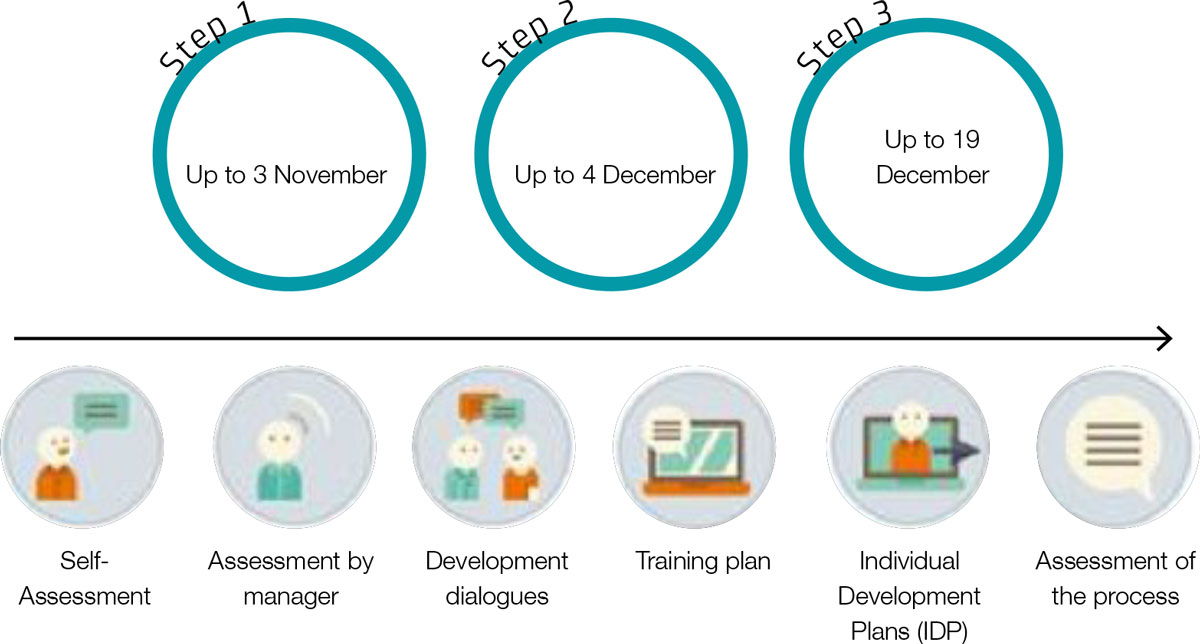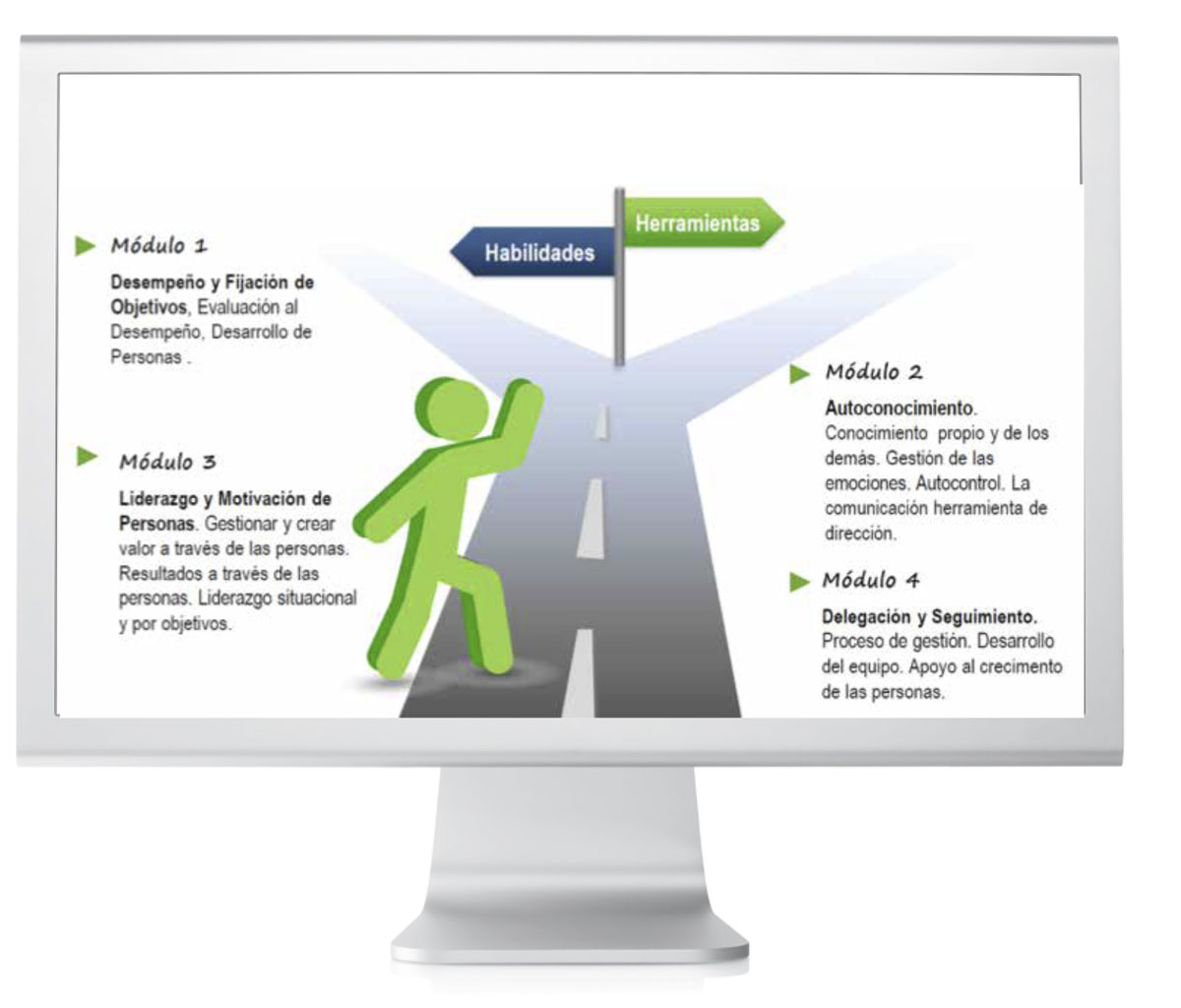connect
people
ANNUAL
REPORT
2016


Cellnex realises that its people management model is one of the pillars that should promote and ensure the achievement of corporate goals.
2016 marked a significant increase in the size of the workforce, mainly due to new acquisitions in Italy and in other European countries in which Cellnex is present (France, Netherlands and the UK). This growth remains a challenge for Cellnex in its change management model and integration of the new companies in the organisational model of the group, particularly in personnel management.
Cellnex realises that its people management model is one of the pillars that should promote and ensure the achievement of corporate goals. This goal can be achieved only by committing to excellence, relying on talent, encouraging human development in a collaborative and innovative working environment, and ensuring the well-being of staff.

With this vision in mind, various programmes and tools were defined in 2016 to ensure that all Cellnex staff have the training required for their job, the information they need to develop their talents and potential, and the tools to facilitate successful change management. These programmes have been implemented in Cellnex Spain, and we expect to continue working in this direction in other countries. The projects implemented in Spain include in particular the new competency model, “the Hub” (see section on Commitment to leadership and talent development).
In line with this vision, Cellnex Italy is working to achieve SA8000 Social Accountability Certification within a time frame ranging from 2017 to 2018. The objective of this certification is to ensure diversity and equal opportunities for all members of the Italy team.
The Cellnex team comprises 1,303 people with a very diverse geographical distribution, with 90% of staff in Spain, 8.5% in Italy, 0.2% in France, 0.6% in the Netherlands and 0.7% in the UK. The workforce is characterised by a preponderance of men, which tallies with the situation in the industry, where there is a strong male presence.
Accordingly, Cellnex deliberately strives to achieve the goal of diversity in its workforce. In that connection, in 2016 the company updated the Equal Opportunities Plan, with the aim of gradually increasing the proportion of women in the company, in all positions and responsibilities, ensuring equal treatment and opportunities for women and men and preventing sexual harassment and sex discrimination, whether indirect or direct.
Staff turnover in Spain and Italy remained stable in 2016, with levels of 4% in Spain and 3% in Italy.

we implemented a comprehensive talent management tool called “the Hub” to facilitate the appraisal and development of human capital, as at Cellnex we firmly believe that success as a company lies in the motivation and enthusiasm of the team.
Commitment to leadership and talent development
The management of the team and development of its talent is one of Cellnex’s strategic pillars.
The “talent management model” was implemented in 2016 and is aligned with the business strategy. Working on the basis on the corporate Vision and Mission, we have defined a competency and leadership model based on the contribution each make to achieving results.
This methodology allows us to have indicators of talent and of improvement and development by minimising the subjectivity of personal assessment and enabling a comparison of progress made between periods.
We have also implemented a comprehensive talent management tool called “the Hub” to facilitate the appraisal and development of human capital, as at Cellnex we firmly believe that success as a company lies in the motivation and enthusiasm of the team.
What if talent could also grow?
In July 2016 we set up the following features of this tool:
The “performance” module became operational in October, which concerns skills assessment and preparing individual development plans based on the 70:20:10 development model. To achieve this, we created the Development dialogues, a space for dialogue between employees and their managers in relation to individual employee development.
The Development Dialogues process in the Hub was as follows:
1) My assessment (Self-assessment and proposal of training needs) Self-assessment and reflection on training needs for 2017.
2) Assessment and Contribution to the training plan: In this step, managers assess employees and call the meeting for the actual dialogue, in which they talk about skills and knowledge and jointly draw up the worker’s Individual Development Plan (IDP).
3) My assessment and IDP: In this final step the employee uploads the IPD developed together with the manager and can complete a survey evaluating the entire process

A total of 181 people received the following training in correct management of Dialogues:
1. Talent development today
2. The role of the manager in employee development
3. Facilitating the IPD (Individual Development Plan)
4. Managing talent on the Hub
IN 2016 NEARLY 70% OF THE WORKFORCE IN SPAIN ALREADY HAVE THEIR OWN INDIVIDUAL DEVELOPMENT PLAN IN WHICH EVERYONE IS A PROTAGONIST.
This training was bolstered with two online courses:
1. “Talent management in Telecom Cellnex” - details of the process in the Hub, with videos of all the steps to take.
2. “Keys to talent development” - workings of the human brain and levers for development, and the different generations living together in today’s organisations.
As a result, in 2016 nearly 70% of the workforce in Spain already have their own Individual Development Plan in which everyone is a protagonist.
Moreover, in 2016, and as the continuation of work begun in 2015 with the training pathways for leadership development, we performed a programme for the development, assessment and monitoring of Heads of Unit and Managers of the company.
The programme was divided into four stages:
Likewise, all Directors are receiving personalised coaching following the assessment according to the leadership model drawn up in 2015.

a) Training 2016
IN 2016 THE STAFF OF CELLNEX SPAIN AND ITALY RECEIVED MORE THAN 45,000 HOURS OF TRAINING.
Cellnex bases its development on the “70:20:10” approach, a development model in which everyone is responsible for their own development and the manager is responsible for accompanying the process while the organisation provides the resources to enable it.
In 2016 technical training sessions were taught associated with the core knowledge of the Department of each partner as well as cross-cutting training such as project management, languages, office automation, skills and Occupational Risk Prevention. Training is face-to-face, online and blended and provided by external experts and/or internal trainers.
In 2016 the staff of Cellnex Spain and Italy received more than 45,000 hours of training of which 10,760 were based on safety training at the workplace. The total financial investment in training in Spain increased 4%.


Leadership
In 2016 we organised a further leadership itinerary course in Spain. Launched in 2015, it is aimed at managers. The aim of this course was to train new managers in the field of people management, acquiring skills and tools to foster leadership change.
To this programme aimed at managers we should add the programmes discussed in the section on Commitment to leadership and talent development. In sum, this involves:
1. Keys for talent development and the talent management model in Cellnex: this training is necessary for understanding the model and helping to implement the 2016 development dialogues
2. Rating leadership using a 360º questionnaire and a critical incident interview, feedback and personal development
The leadership training sessions conducted in Italy in 2016 were also aimed at managers and team leaders. These courses aim to provide the necessary tools to equip them all with the skills and knowledge required in their workplace., In 2015 Cellnex Italy joined Fondirigenti, a national training organisation, through which the managerial training courses will be organised.
The programme launched in 2016 is scheduled to end in 2017, and seeks to improve the following skills:
SPECIFIC TRAINING PROGRAMMES
Leadership pathway
The aim of this course was to train the new managers in the field of people management, acquiring skills and tools to foster leadership change.
Pathway for project managers
The programme, access to which depends on an assessment, consists of 4 modules:
Staff who complete the training can then access the Project Management Programme (PMP) official examination, which is an internationally recognised certificate that validates the competence to act as a project manager, leading and directing projects and teams. To help them to pass this exam, managers are provided with an exam preparation course involving not only face-to-face sessions but also allowing access to an online tool and a tutorial session to resolve their doubts and provide support in the final preparation of the official examination.
Pathways for in-house trainers
This project aims to prepare trainers for their role as Internal Trainers.
Languages
Language grants included in the Cellnex Telecom training grants programme.
A new model of objectives disassociated from competency-based management was introduced in 2016 to roll out the company strategy.
b) Management by objectives
Cellnex Telecom considers it important to implement a variable remuneration system based on achieving objectives as an incentive to stimulate contribution and additional value creation in a systematic way, ensuring global alignment of efforts to achieve the results for the Group that the market expects.
This array of objectives rolls out the group’s priority strategy in each country and consistently combines crossed objectives among different areas that cover the main projects of the current year to support the business strategy. The model is implemented at all levels and profiles of the company.
A new model of objectives disassociated from competency-based management was introduced in 2016 to roll out the company strategy. Furthermore, a talent suite called The Hub was implemented. Among other things, it is the place from which to organise management by objectives and competency-based management.
Objectives 2017
A social network of caring employees: Volunteers
The Cellnex Volunteers network was set up in 2015, a social network of volunteers who can contribute their ideas, skills, knowledge and time to implement solidarity projects. The main actions in 2016 were follows:
Recogida de ilusiones 2016: a solidarity campaign for children and adolescents: this initiative involves collecting toys and financial contributions for children’s and youth groups most in need during the Christmas holidays.
Commitment to health and well-being at work
In order to ensure a healthy working environment in which all company staff know the health and safety measures in the workplace, the company provides training in occupational health and safety for the whole workforce. In 2016, some 13,006.50 hours of training were imparted in occupational risk prevention and occupational safety.
Cellnex also looks after well-being on its premises, striving to implement the best health and safety measures and ensuring compliance with the relevant rules in all its premises. In order to ensure compliance with existing legislation on occupational health and safety and its integration in all the company’s departments and processes, Cellnex Spain and the businesses that make it up are certified according to OHSAS 18001:2007 by the auditing body TÜV Rheinland.
Cellnex Spain has a Multi-Plant Health and Safety Committee which handles prevention issues affecting the company as a whole. It also has two Health and Safety Committees, for the Barcelona and Madrid sites, which handle issues specific to the corporate buildings. In 2016, there were four meetings of the health and safety committee, representing 98.2% of the workforce in Spain. In parallel to this, there is an e-mail of the Joint Prevention Service and an app on the corporate Intranet to allow any Cellnex worker to communicate any situations in which worker safety could be compromised.
Similarly, in Italy direct communication channels have been established between the Human Resources Department and the staff to communicate situations that could comprise safety and prevention of occupational risks. Also, procedures have been defined for action required on receiving communications.
GRI: G4-DMA, LA9, LA10, G4-26, G4-27, G4-EC3, G4-EC6, G4-LA12, LA5, LA10, G4-28y G4-27
We use our own and third-party cookies to improve our services and show you advertising related to your preferences by analysing your browsing habits. If you continue to browse, we understand that you accept the use of these cookies. You can change your configuration or obtain further information Cookies Policy. Accept